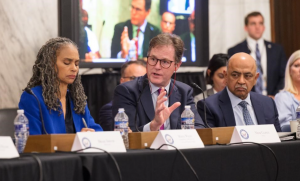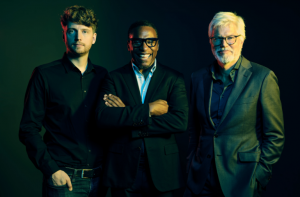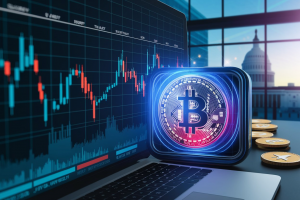How Much is the Mobile Wallet Worth?
There can be few people in the tech sector who could have predicted how pervasive the smartphone would become. Recent estimates suggest that by 2015 there will be over 1 billion smartphones driving close to 6.3 exabytes of data per month. These devices are ![]() becoming the core of our existence. From communications, to entertainment, to education, to healthcare, there’s little we don’t use our smartphones for. Well, except for payments. And this is an area that has tantalised the mobile industry for the past 15 years. However, it appears that we’re starting to edge closer to making a mobile wallet a mobile reality.
becoming the core of our existence. From communications, to entertainment, to education, to healthcare, there’s little we don’t use our smartphones for. Well, except for payments. And this is an area that has tantalised the mobile industry for the past 15 years. However, it appears that we’re starting to edge closer to making a mobile wallet a mobile reality.
The recent launch of the Google Wallet has placed mobile payments firmly back under the tech spotlight and added much needed vigour to a fragmented marketplace. Partnering with Citibank, Mastercard, Sprint and First Data, Google has developed a strong supporting cast and has already announced initial trials in San Francisco and New York. Like most of its competitors, Google is developing its mobile wallet on Near Field Communication (NFC) technology, using chips in its phones to enable wireless payments. However, there are currently only 120,000 U.S. locations and 300,000 worldwide that accept NFC payments.
One of the limiting factors to widespread NFC adoption has been buy-in from retailers. In order to make NFC payments work, you need two devices: the phone (user) and a receiver (retailer). Until now, the business case for retailers to move from traditional payment models to mobile wallets wasn’t clear. Where was the return on investment? However, this is changing. Google is featuring Google Offers in its mobile wallet, ensuring that retailers can target users with specific offers and coupons related to their purchase history. In addition to coupons, retailers will also be able to use geolocation services to target your mobile wallet with promotions and other tempting deals whenever you’re near a store. And this is what interests retailers – strengthening the tie to consumers and building a unified retail experience. This is something that wasn’t possible until now.
Analysts are already forecasting what these new services could be worth and the figures fluctuate wildly. Juniper Research predicts worldwide NFC mobile payments to reach $50 billion by 2014, while Generator Research suggests that general mobile payments will top $663.4 billion by the same year. Even if we use the more conservative estimate of the two, there’s clearly a great deal of potential here. Yet it isn’t necessarily the total value of the transactions that interests Google and other mobile players, it’s the data that’s important, especially in respect to potential advertising revenue. This is why almost every smartphone manufacturer is starting to add NFC chips to their phones. Nokia and RIM are some of the early adopters and rumour has it that Apple is also about to launch a mobile payments scheme.
The notion that Apple could join what is fast becoming a crowded marketplace is one of the most exciting prospects. Consider for a moment the size of iTunes. Earlier this year, there were over 220 million registered iTunes users. Now also consider that well over 100 million iPhones have been sold to date. If Apple enters the mobile payments space it already has a wealth of credit card details and personal data to work from. It’s only a small leap of the imagination to see how Apple could become a dominant player. Yet there are a number of obstacles to overcome and one of the key issues is the relationship between Internet companies and mobile carriers.
As I mentioned in a previous post, mobile carriers are struggling to redevelop their business models as we move to all-data networks. With dwindling voice revenues and a continued explosion in the demand for mobile data, mobile carriers are questioning how they avoid becoming purely transport links? Yet with mobile payments, carriers have seen a glimpse as to how they can increase ARPU by developing their own NFC networks. And one need only look at Isis to see what’s possible here. Intent on beating Google and other competitors to the mobile payments market, AT&T, T-Mobile and Verizon have joined forces to develop Isis, their own mobile wallet. Although it’s taken some time to move forward on this joint collaboration, Isis recently announced that initial trails have begun in Salt Lake City, Utah. As of yet, no results have been reported.
As Internet companies, mobile carriers and many other competitors scramble to make significant inroads here, they are collectively challenged with one significant hurdle that goes beyond technology and that’s the public. Changing a mindset that is entrenched on using cash and credit cards to pay for goods will be an enormous challenge. Security will be a key issue, as will the whole notion of receipts. However, there is a definite role model to follow here and that’s Starbucks. Earlier in the year, Starbucks launched a smartphone app that enables users to pay for their lattes by scanning their mobile devices. Within just two months, Starbucks announced that over three million customers had paid for goods using the app. This provides a strong indication of how customers will respond to mobile payment opportunities, especially when they’re incentivised by discounts and offers.
I have to confess that I’m excited by the possibilities here, and that’s not purely because of the free coffee. The smartphone is an ideal replacement for wallets and the enhanced functionality it provides both from a retailer and a customer perspective is incredible. Whether Groupon will agree is another matter.
What do you think to developments here? Do you believe there’s a strong market for this technology? What are the main obstacles that we still need to overcome? I’d be interested to hear your thoughts on this one.
[Cross-posted at High Tech Forum]
A message from John Furrier, co-founder of SiliconANGLE:
Your vote of support is important to us and it helps us keep the content FREE.
One click below supports our mission to provide free, deep, and relevant content.
Join our community on YouTube
Join the community that includes more than 15,000 #CubeAlumni experts, including Amazon.com CEO Andy Jassy, Dell Technologies founder and CEO Michael Dell, Intel CEO Pat Gelsinger, and many more luminaries and experts.
THANK YOU













